How to Write a Case Study That Will Grip Your Leads Tight (and Get You Sales)

I’m sure you know this already: a case study can be an amazing tool to convince leads to go with your solution, particularly if they’re in the final stages of the buying process.
But I’m sure you’ll also agree with me on this:
Writing a compelling case study is actually darn hard.
Of course, you know you need to get together some quality customer feedback.
That’s a given.
But I bet you have no idea how to turn it into an engine that could help push leads further down your sales funnel, right?
Luckily for you, that’s exactly what I’m going to cover in this post.
I’ll show you how to write a gripping case study that’s guaranteed to boost your leads to sale conversion rate.
Sounds interesting? Let’s dive right in.
Why You Really Need to Create Quality Case Studies
First, because they actually work.
I’m sure you’ve heard of the influence case studies can have on customers at the consideration stage of the customer journey.
But did you know Eccolo Media’s 2015 technology content study ranked case studies as the third most-influential type of marketing content?
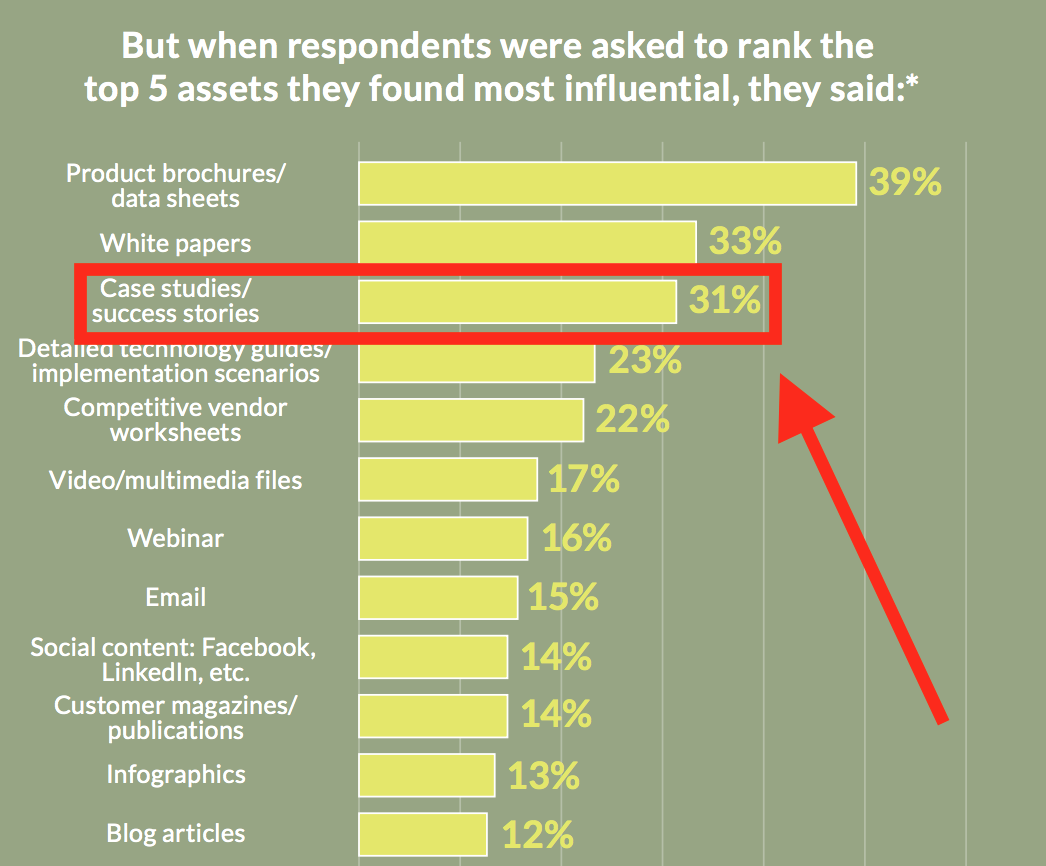
That puts case studies ahead of email, social media content and blog articles.

But here’s where things get interesting:
CMI’s 2017 B2B Content Marketing Report revealed social media, blogs and email as the most used tactics by B2B marketers.
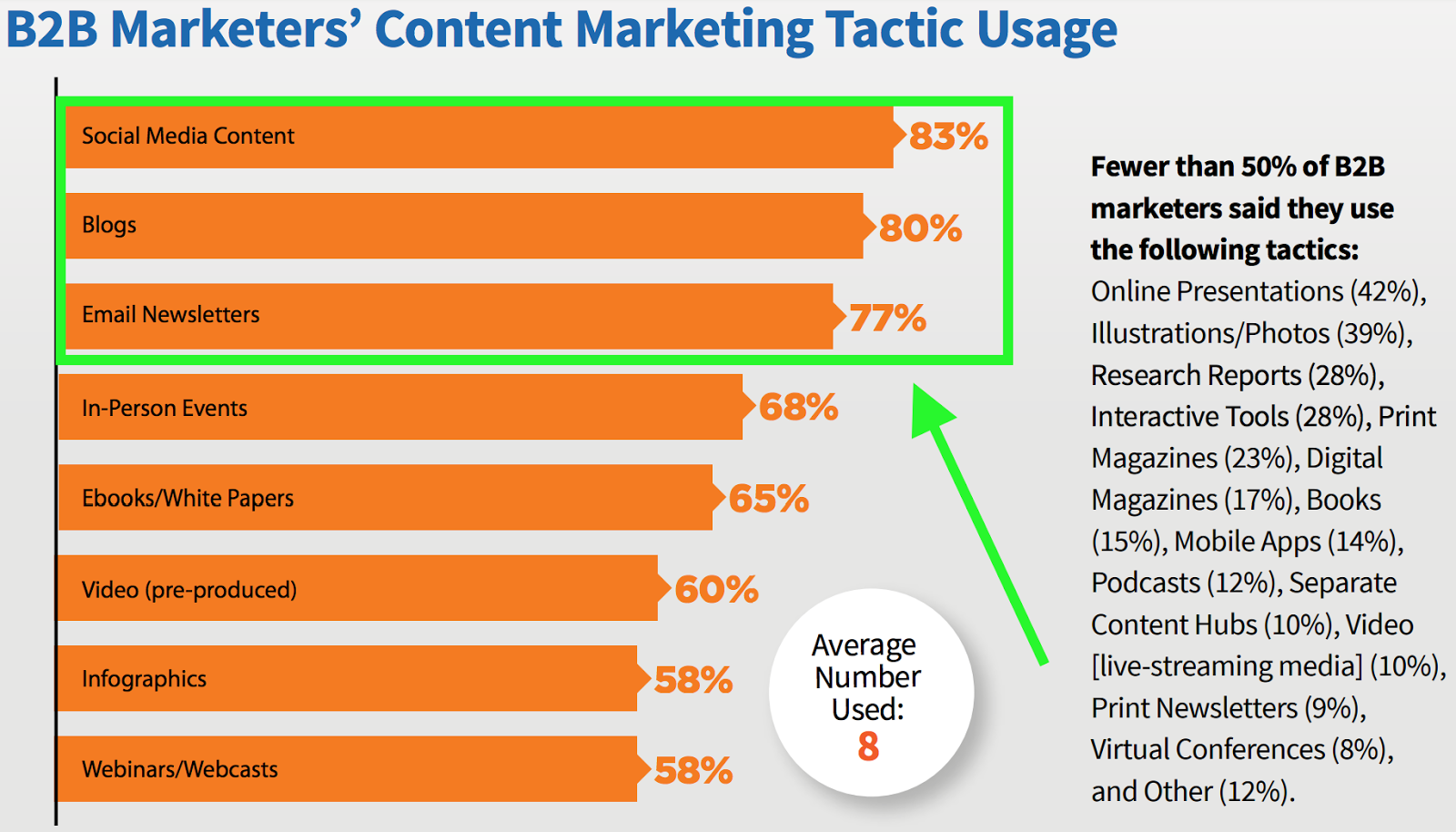
So what does that mean for you?
It means case studies are some of the most effective means for communicating with potential customers and even still, your competitors likely aren’t creating them.
This leaves big opportunity for you to take advantage with compelling case studies of your own that help set you apart.
Pretty exciting, huh?
So, let’s jump into exactly what you can do today to create a great case study for your customers.
#1. Choose a Customer Who Knows Your Product or Service and Got Tremendous Results from Using It
You know:
When it comes to writing case studies that can convert leads, the biggest challenge you’ll face is choosing the right customer to spotlight.
For example: is it better to invite a new customer happy with their decision to invest in your solution?
Or instead, should you focus on a legacy customer whose loyalty might help push hesitant leads over the fence to becoming customers?
Truthfully, the length of time you’ve done business with someone isn’t nearly as important as the problem you solved for them.
Potential customers want to see your impact in measurable results. As Morgan Norris wrote on the TREW Marketing blog:
“Choose a customer who will tell your story well. Find a customer who has significant, quantifiable results in an application that is relevant to the most people that will show other potential customers the value of your product or service.”
Here’s a great example for you. CB Insights, a market intelligence platform for tech companies and investors, includes four case studies on their website under the menu label of “Customer Love.”
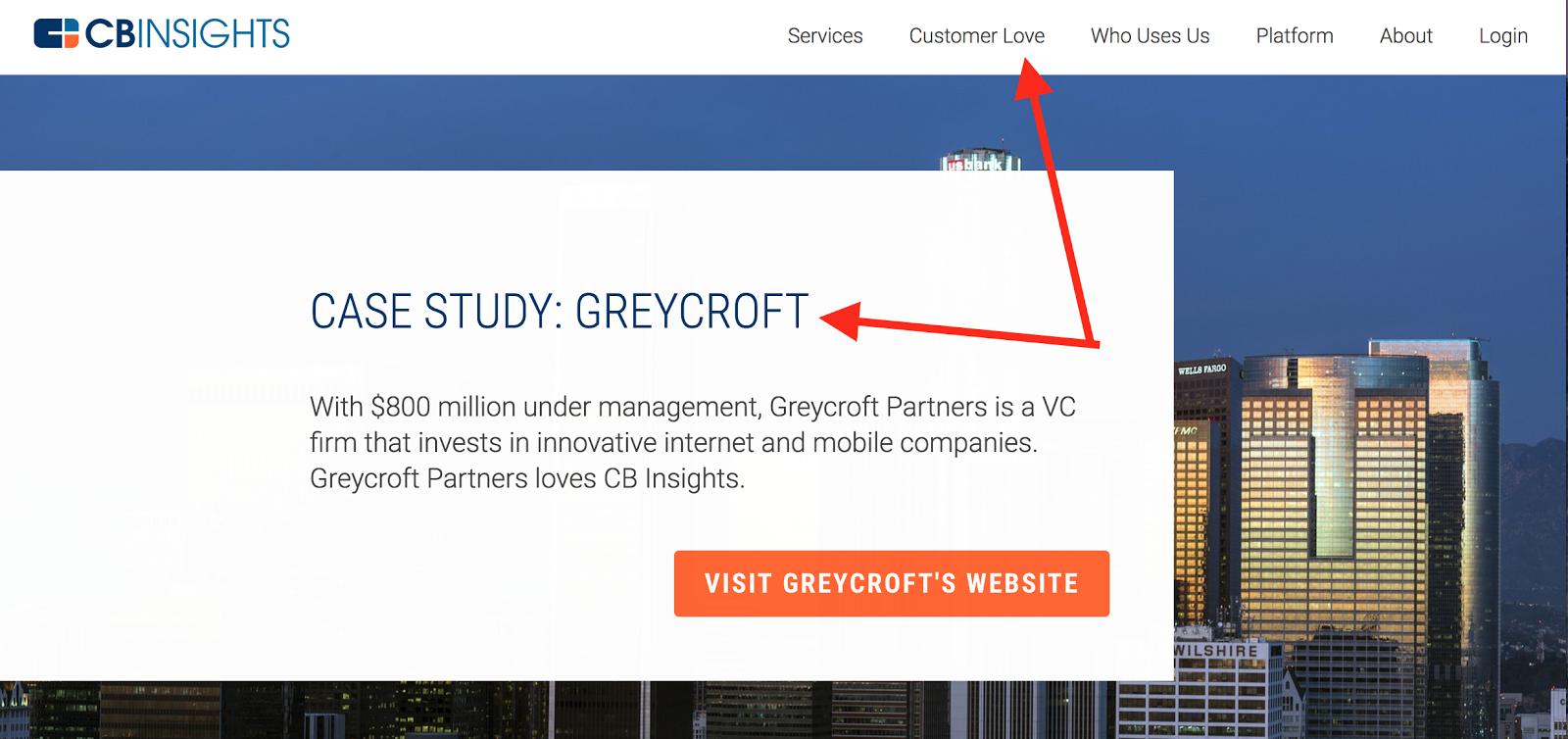
The company they chose to spotlight, Greycroft, is a very recognizable name in Silicon Valley (where CB Insights targets most of their new business) certain to catch the attention of any venture capitalist considering their solution.
But that’s not all. What CB Insights did next was nothing short of brilliant.
The case study is just three short paragraphs broken down into sections: “The Problem,” “Why CB Insights?” and “Results.”
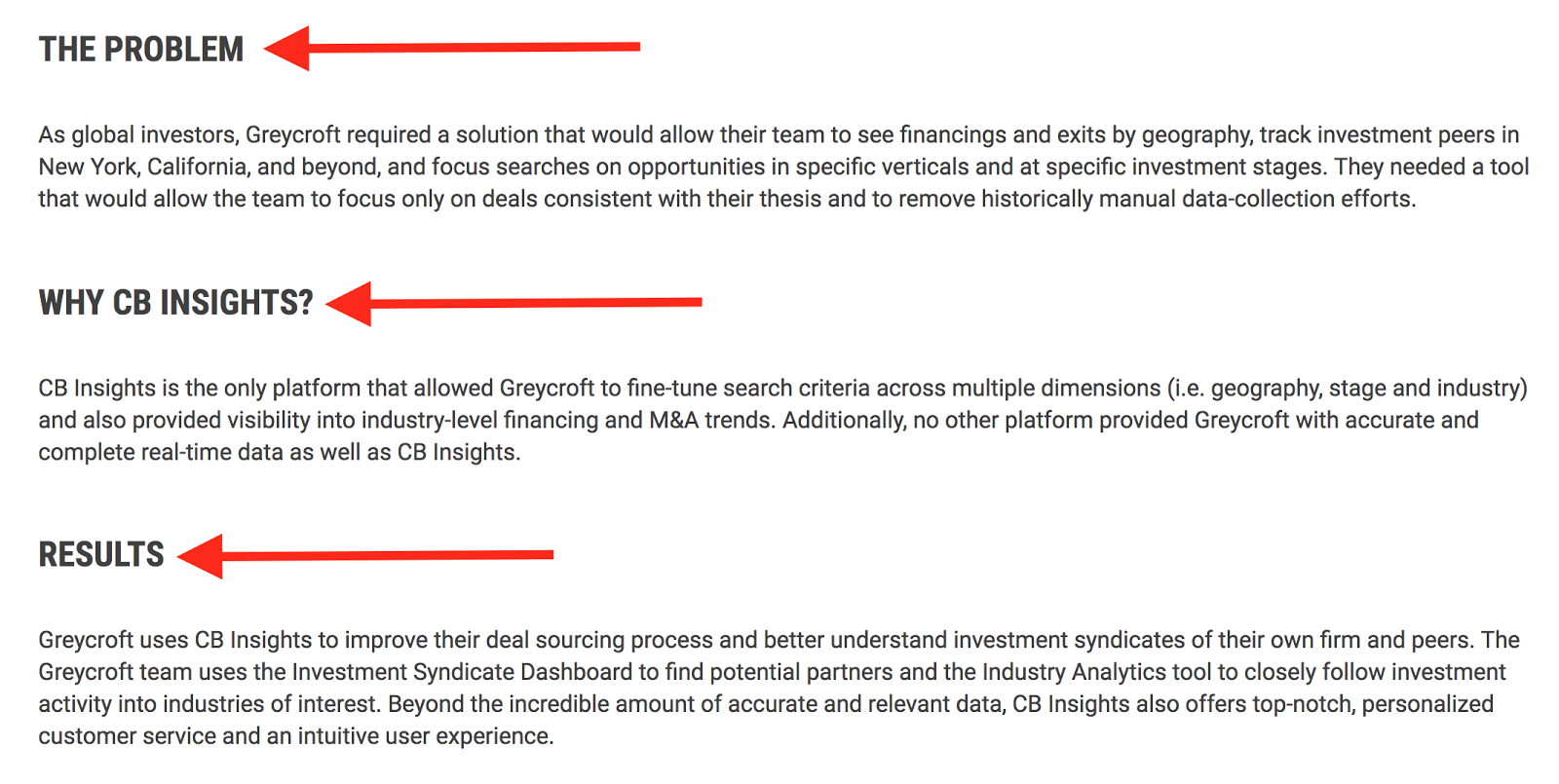
So, in a single page that takes less time to read than most Facebook updates, a potential customer learns how CB Insights helped solve a major, industry-wide problem for a household name company.
Pretty amazing, right?
Now, let’s look at how data can enhance your case study to really drive home the results your solution delivers.
#2. Ask for Specific Data that Highlights the Impact of Your Solution
Once you’ve selected your customer, the next step would be to conduct the interview.
Now, you might think: this is the easy part. I talk to customers everyday about how our solution is impacting their business.
Sorry, it’s not quite the same.
You see, in an interview for a case study, you need to accomplish a few key things.
First, make the customer feel comfortable. No one wants to jump right into business talk – use a few icebreaker questions to lighten the mood. Doing so gets your customer feeling loose and ready to open up.
Then, get their story from their perspective. You want to hear (and record) how they view your solution and the problem it solved.
Finally, you need to press for hard data to support the results. Anecdotal feedback like “your solution relieved stress and took a ton of weight off my shoulders” has far less of an impact than “your solution increased our company’s productivity by 24% in the first two months of using it, resulting in a 13% boost in sales last month.”
See the difference?

In case you’re not sure where to start, here are some great questions you can ask to get more specific data from your customer.
- What does the return on your investment in our solution look like to-date?
- Are there things your business can do now that they couldn’t do before using our service?
- How does your business quantify the impact of our solution internally?
Take a look at this example. Zooz, an all-in-one payment platform, created a comprehensive case study for an unnamed high-end European retailer.
While I wish they would’ve received the go-ahead to include the client’s name in the case study, the data alone is enough to make the study memorable.
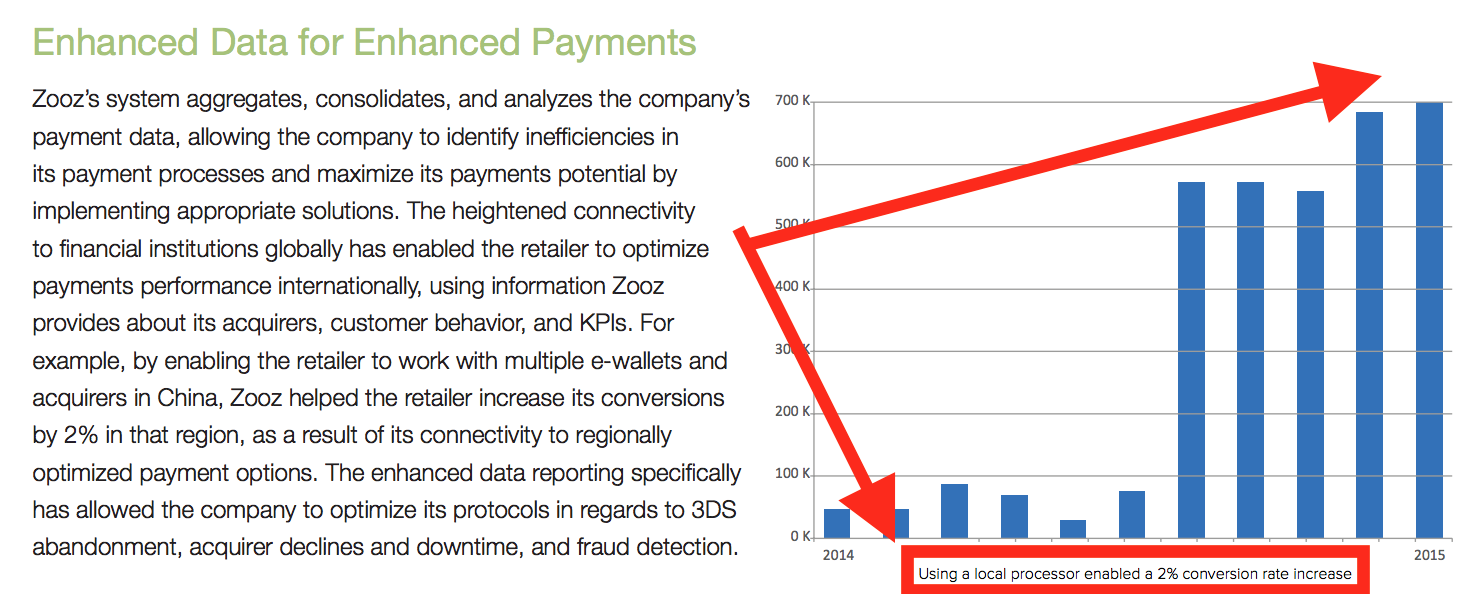
Sure, Zooz could have simply shared that they helped a global retailer increase conversions. But using specific data and including a bar graph gives the case study a visual that helps tell the story of Zooz’s impact for their customer.
We’ll talk more about visuals in just a moment, but next I want to share the importance of tying results to a specific piece of your solution.
#3. Cover the Specific Strategy or Solution That Delivered the Results
Another way to boost the effectiveness of your case studies is by mentioning the specific bit of your solution that your client found most valuable in delivering results.
Remember CB Insights doing this in their Greycroft case study?

This strategy is particularly helpful if your business offers a wide-array of solutions, all for different purposes and at different price points (which, as you’ll see below, CB Insights does).
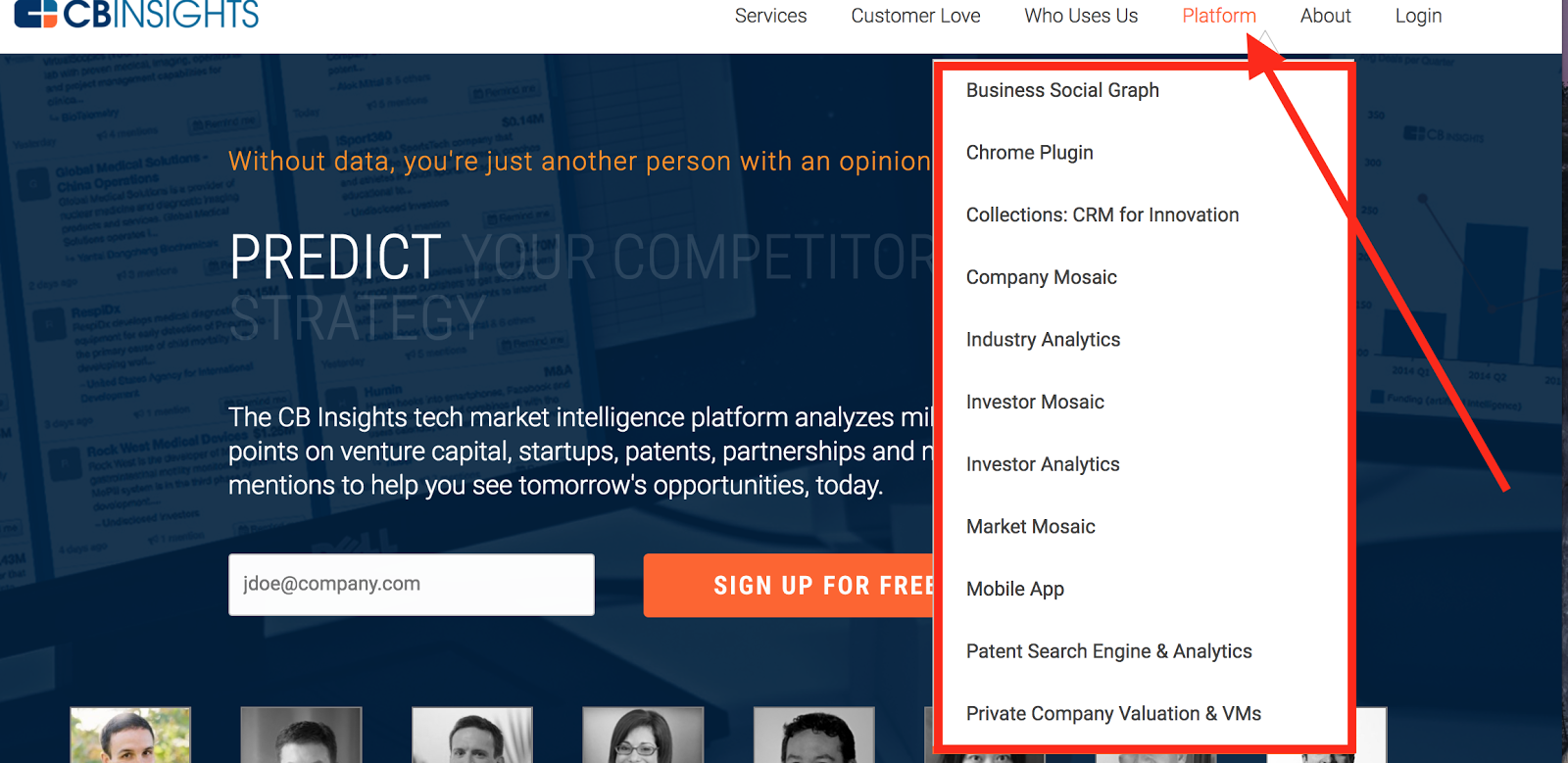
#4. Use Visuals to Help Break Up Text-Heavy Sections
I’ve covered before how visuals can add life to your sales proposals. Well, the same idea applies to case studies as well.
When done right, including images can be a simple way to break up large chunks of text.
Plus, there’s the added bonus of giving some visual context to the story you’re telling.
Let me show you what I mean. Take Bizzabo, for example.
Take a look at how they include images from successful events that used their software in the case study.

Pretty brilliant, right?
The images break up a good wall of text while also showing a potential customer what a successful event run by Bizzabo’s software looks like.
And that’s it…
With these few suggestions, you should be able to turn ineffective case studies into successful tools for lead conversion.
Bonus: Want to be absolutely sure that you’re writing a killer case study? Grab our 14-point case study writing checklist to verify that you’ve included everything you should have. Get it here >>
